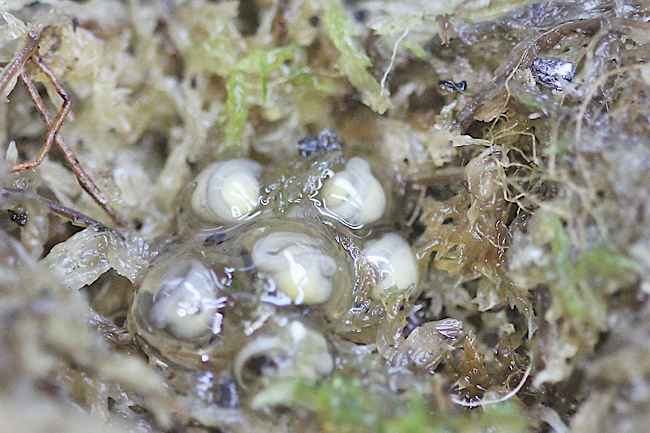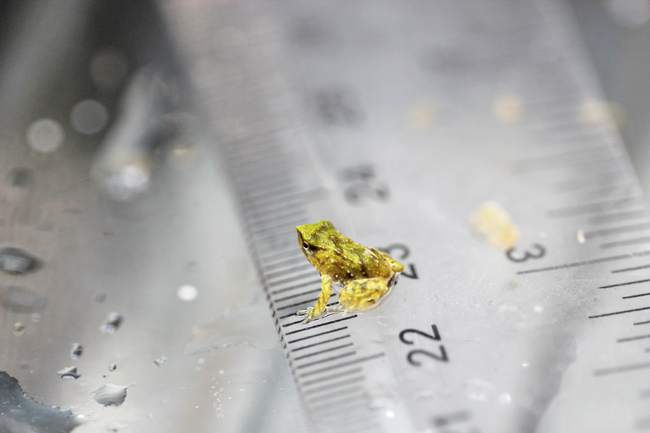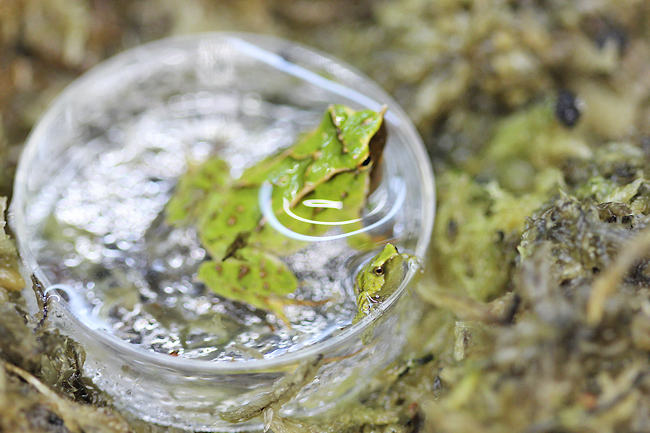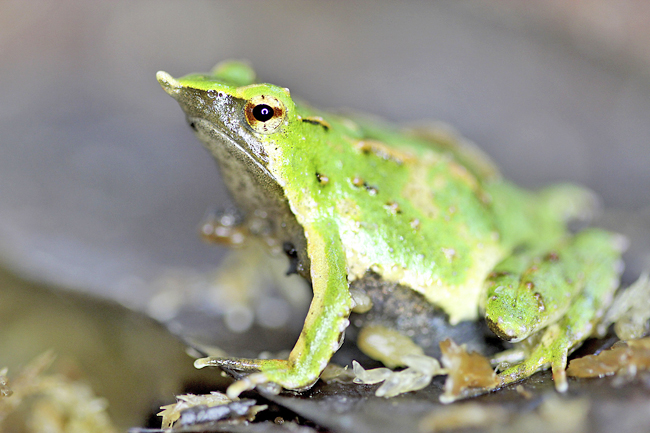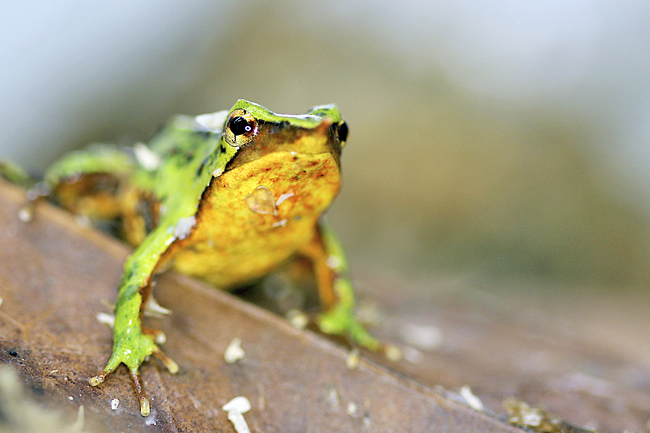LONDON (AP) – It was quite the journey for such tiny froglets: travelling thousands of miles from the forests of southern Chile to London, carried and brooded inside their fathers’ vocal sacs for safety.
London Zoo said that 33 endangered Darwin’s frogs, named after scientist Charles Darwin who discovered the species, were born in their new home as part of a rescue mission to save the species from extinction.
Known populations of Darwin’s frogs have suffered a 90 per cent decline within a year since a deadly disease known as chytrid fungus arrived in 2023 in their habitat, the Parque Tantauco forests in southern Chile.
The fungus has affected hundreds of amphibian species around the world. The creatures have a unique reproductive strategy: after the females lay eggs, the male frogs protect and rear the tiny tadpoles inside their distensible vocal sacs for them to develop in safety.
A team of conservationists travelled to Chile’s forests in October in search of healthy Darwin’s frogs free of the infectious disease.
They collected 52 frogs, which were then placed in climate-controlled boxes for a 11,265-kilometre ride by boat, car and plane to their new home in London.
Of the group, 11 male frogs – each measuring under three centimetres – carried 33 tadpoles that were born at the zoo.
“We knew we were embarking on something special – the clock was ticking, and we needed to act quickly if we were going to save these frogs,” said curator Ben Tapley of amphibians at London Zoo. He said the successful parent-rearing of the froglets was a “powerful symbol of hope for the species.” The frogs are now kept in pairs inside dozens of glass tanks filled with moss and with temperatures that mimic their natural habitat.
Keepers said the zoo will set up a breeding programme for them, and any frogs they breed may later be reintroduced into the wild.
Researcher Andres Valenzuela-Sanchez at ZSL, the conservation charity behind London Zoo, said the project will ensure the species has a fighting chance of recovery.
“These frogs are not only vital for the future of their species but also help us better understand how we can combat chytrid fungus and safeguard other amphibians globally,” he said. – Sylvia Hui
